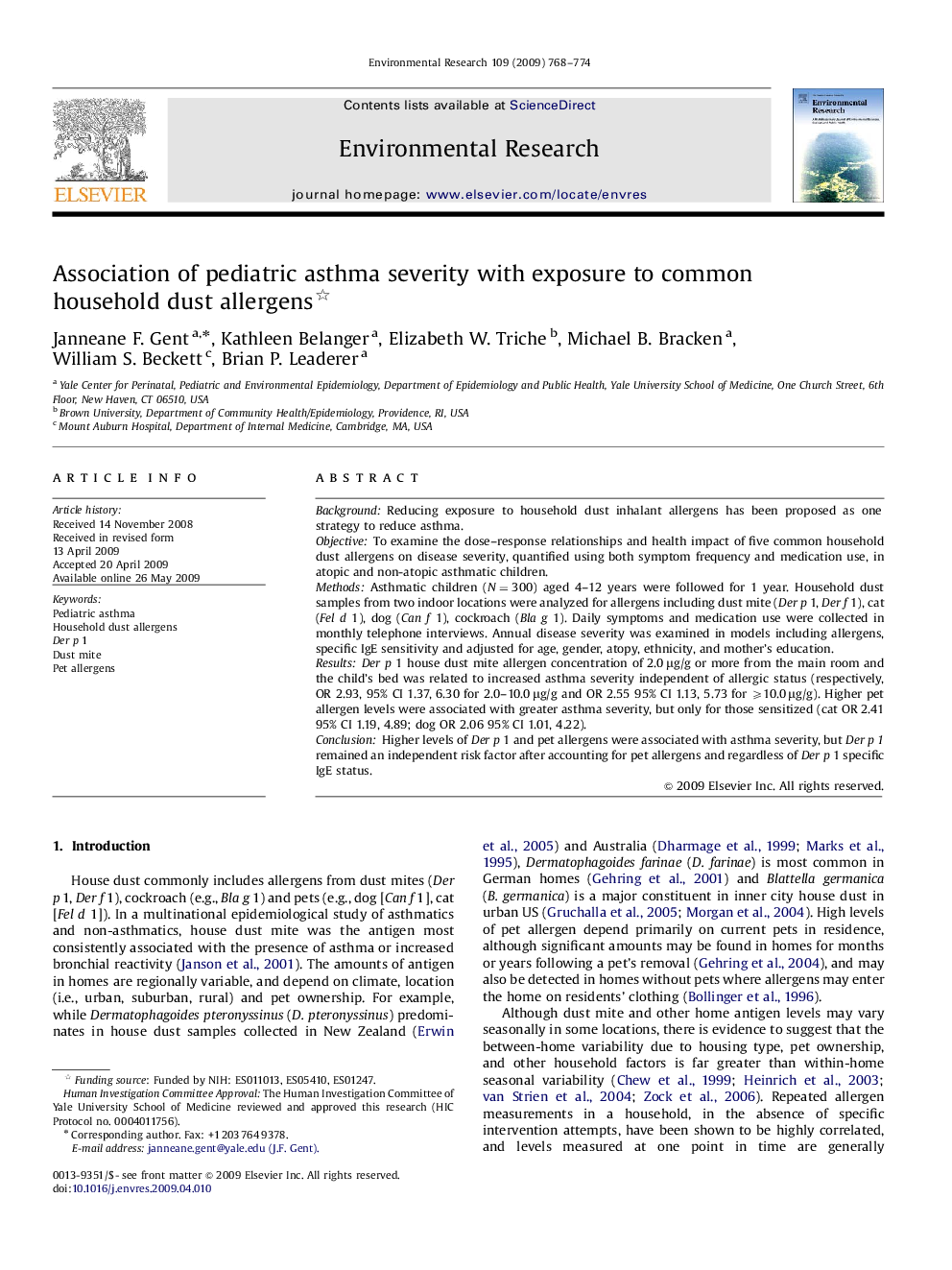| Article ID | Journal | Published Year | Pages | File Type |
|---|---|---|---|---|
| 4470550 | Environmental Research | 2009 | 7 Pages |
BackgroundReducing exposure to household dust inhalant allergens has been proposed as one strategy to reduce asthma.ObjectiveTo examine the dose–response relationships and health impact of five common household dust allergens on disease severity, quantified using both symptom frequency and medication use, in atopic and non-atopic asthmatic children.MethodsAsthmatic children (N=300) aged 4–12 years were followed for 1 year. Household dust samples from two indoor locations were analyzed for allergens including dust mite (Der p 1, Der f 1), cat (Fel d 1), dog (Can f 1), cockroach (Bla g 1). Daily symptoms and medication use were collected in monthly telephone interviews. Annual disease severity was examined in models including allergens, specific IgE sensitivity and adjusted for age, gender, atopy, ethnicity, and mother's education.ResultsDer p 1 house dust mite allergen concentration of 2.0 μg/g or more from the main room and the child's bed was related to increased asthma severity independent of allergic status (respectively, OR 2.93, 95% CI 1.37, 6.30 for 2.0–10.0 μg/g and OR 2.55 95% CI 1.13, 5.73 for ⩾10.0 μg/g). Higher pet allergen levels were associated with greater asthma severity, but only for those sensitized (cat OR 2.41 95% CI 1.19, 4.89; dog OR 2.06 95% CI 1.01, 4.22).ConclusionHigher levels of Der p 1 and pet allergens were associated with asthma severity, but Der p 1 remained an independent risk factor after accounting for pet allergens and regardless of Der p 1 specific IgE status.
